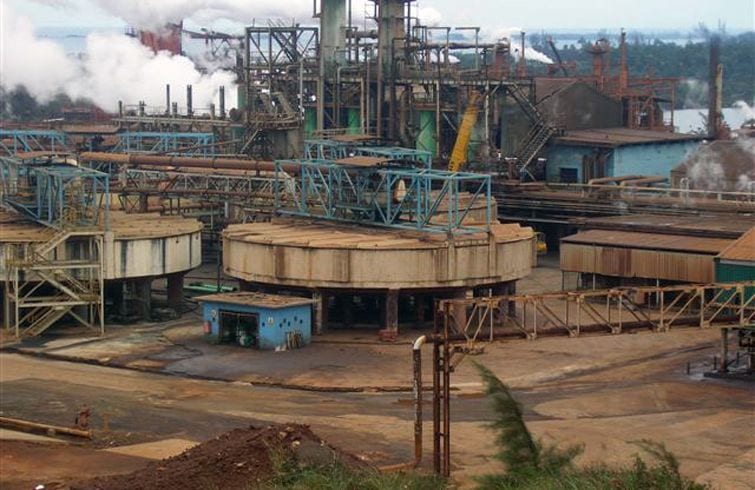Cancer on the Prowl in Mayari, Holguin, Cuba
By Osmel Ramirez Alvarez

HAVANA TIMES – My uncle Veronico has bone cancer, multiple myeloma. Five months ago, he was immersed in his tobacco harvest for export, with a hundred problems, but he seemed to be healthy. However, he had to abandon the harvest immediately and his physical decline has been advancing at a terrifying pace.
He wasn’t exactly a farmer; he was just getting ahead with his plans to look after himself as he was about to retire. Imagine, if wages were never enough to cover his basic needs, what would his pension do? He worked for over 40 years in the nickel industry, as a retranquero (manually stopping carts filled with the mineral, sliding down) and then as a locomotive driver.
He will be 65 years old on June 9th. Now, his life goal has changed: make it to July 1st so he can apply for his pension, and not leave his life-long partner destitute.
My cousin Alexey’s son is 6 years old and he is receiving chemotherapy after surgery, because a kidney had to be removed after a malignant tumor was detected. He has already lost all of his hair. Luckily, his innocence prevents him from worrying about death and the future, which is an advantage as these diseases feed off stress.
Manuel, my wife’s uncle, has managed to survive two years after having throat cancer. Even though he has lost a lot of weight and he wears a neckerchief to cover the aftermath of the tracheotomy, chemotherapy has been working really well for him so far and he is already back on his bike fixing Soviet fridges and washing machines in order to make a living. His grandniece, my wife’s second cousin, wasn’t as lucky and died three years ago from a brain tumor. She was only 7 years old.
Esperanza, my grandmother’s sister died from breast cancer, which spread to the lung; my cousin Elsi has the same thing, but has survived thanks to treatment; my cousin Rafaela, her sister, has miraculously survived, even though she was only given three months to live after being diagnosed with advanced colon cancer; my uncle Jose Maria died from throat cancer; my neighbor next door, Edita, received a terminal diagnosis, but she has survived five more years after having chemo and radiotherapy to treat endocervical cancer; my neighbor opposite, Ariel, died six years ago from colon cancer and two years later, his son Osmani passed away because he had multiple myeloma; my ex-father-in law Carlos, my eldest daughter’s grandfather, died from cancer about the same time. The list is never-ending.
Not a local or family-related matter
Anyone would think that this is a local or family-related matter. It isn’t. Not at all. Maybe my family and neighborhood are some of the least affected and I have only mentioned close examples. But we don’t have access to the Health Sector’s statistics, at a municipal, provincial and national level, as they are handled by Public Health with a great deal of secrecy.
It’s true, though, that there is a very high recurrence of cancer in Mayari, which doesn’t seem normal at all. And, there aren’t any leads for people to investigate. On the Internet, I only found out that it figures among the 72 municipalities classified with a Risk I level, of higher incidences, and that Holguin province is above the national average (and surely the global average) and is on the rise.
People speculate about the causes of so many cases of cancer, out of fear and desperation. For 70 years, the Nicaro factory has been a source of pollution with its nickel and cobalt production. And, while it was knocked down in 2013, deposits continue to emit mineral particles that are blown by the wind in the dry season, dozens of kms away. Cobalt and nickel dust has been registered as a physical carcinogen with a build-up effect in the mid-long term.
To the north, we also have the country’s largest thermoelectric plant in the country, the Felton, but no data about its pollution levels have been disclosed. This is also a tobacco-growing region and pesticides are used to wipe out larvae and fungi, in order to keep the leaves healthy. Recently, TeleSur broadcast a report about Brazil in which it criticized its use of acephate, which is one of the pesticides used the most in Cuba.
Similarly, there doesn’t seem to be anyone in this country who is monitoring or certifying foods that are produced and consumed, regardless of the fact that there are organizations who are responsible for doing this. The food we eat is nourishment and poison at the same time, in most cases.
On the other hand, while we don’t have as many cars on our roads like in the rest of the world, the cars we do have are out-dated and pollute a great deal. The gasoline fumes they expel needs to be made up of lead and maganese compounds in order to be premium. A technological reconversion has never been announced for people to stop using them. For example, between 2000 and 2002, Europe suspended their use because of the harmful effects on the environment and human health.
It’s a lethal cocktail of carcinogens: chemical, physical or biological. People feel at risk and they have every reason to. It’s a very alarming matter, there’s no doubt about it, and the government needs to formulate a prevention strategy, that reduces causal agents, beyond just early detection and health education policies. These alone aren’t enough to tackle cancer, no matter how important they are.
